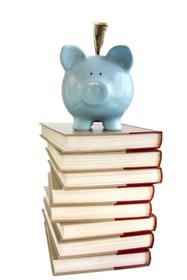Top Rankings
Sunnyside School District ranks among the top 20% of public school district in Washington for:
Category
Attribute
Community Size
Largest student body (number of students) (Top 1%)
For the 2025-26 school year, there are 2 public high schools serving 2,169 students in Sunnyside School District. This district's average high testing ranking is 2/10, which is in the bottom 50% of public high schools in Washington.
Public High Schools in Sunnyside School District have an average math proficiency score of 14% (versus the Washington public high school average of 34%), and reading proficiency score of 56% (versus the 65% statewide average).
Public High School in Sunnyside School District have a Graduation Rate of 84%, which is equal to the Washington average of 84%.
The school with highest graduation rate is Sunnyside High School, with 84% graduation rate. Read more about public school graduation rate statistics in Washington or national school graduation rate statistics.
Minority enrollment is 93% of the student body (majority Hispanic), which is more than the Washington public high school average of 50% (majority Hispanic).
Overview
This School District
This State (WA)
# Schools
9 Schools
859 Schools
# Students
6,213 Students
392,562 Students
# Teachers
348 Teachers
19,037 Teachers
Student-Teacher Ratio
18:1
18:1
Student By Grade
District Rank
Sunnyside School District, which is ranked within the bottom 50% of all 306 school districts in Washington (based off of combined math and reading proficiency testing data) for the 2022-2023 school year.
The school district's graduation rate of 84% has decreased from 90% over five school years.
Overall District Rank
#259 out of 307 school districts
(Bottom 50%)
(Bottom 50%)
Math Test Scores (% Proficient)
23%
41%
Reading/Language Arts Test Scores (% Proficient)
37%
53%
Science Test Scores (% Proficient)
28%
49%
Graduation Rate
84%
84%
Students by Ethnicity:
Diversity Score
0.13
0.68
% American Indian
n/a
2%
% Asian
n/a
8%
% Hispanic
93%
26%
% Black
n/a
5%
% White
6%
50%
% Hawaiian
n/a
1%
% Two or more races
1%
8%
All Ethnic Groups
District Revenue and Spending
The revenue/student of $19,049 is higher than the state median of $18,796. The school district revenue/student has grown by 8% over four school years.
The school district's spending/student of $18,963 is less than the state median of $19,247. The school district spending/student has grown by 8% over four school years.
Total Revenue
$118 MM
$20,715 MM
Spending
$118 MM
$21,212 MM
Revenue / Student
$19,049
$18,796
Spending / Student
$18,963
$19,247
Best Sunnyside School District Public High Schools (2025-26)
School
(Math and Reading Proficiency)
(Math and Reading Proficiency)
Location
Quick Facts
Rank: #11.
Sunnyside High School
(Math: 14% | Reading: 56%)
Rank:
Rank:
3/
Bottom 50%10
1801 E. Edison Avenue
Sunnyside, WA 98944
(509) 837-2601
Sunnyside, WA 98944
(509) 837-2601
Gr: 9-12 | 2,167 students Student-teacher ratio: 21:1 Minority enrollment: 93%
Rank: n/an/a
Shs Graduation Alliance
Alternative School
1801 E Edison Ave
Sunnyside, WA 98944
(855) 486-8855
Sunnyside, WA 98944
(855) 486-8855
Gr: 9-12 | 2 students
Recent Articles

How Public Schools Support Students on Free / Reduced-Lunch Programs
Explore how U.S. public schools support students eligible for free or reduced-price lunch through nutrition, academic, and wraparound services in 2025.

Hidden Costs of Public Schools: Fees, Supplies & Extras
Explore the hidden costs in public schools—fees, supplies, extracurriculars—and how parents can plan for them in 2025.

Public School Funding 2025: What Families Should Know
Essential insights on public school funding in 2025—how it works, what’s changing, and what families should know to stay ahead.





